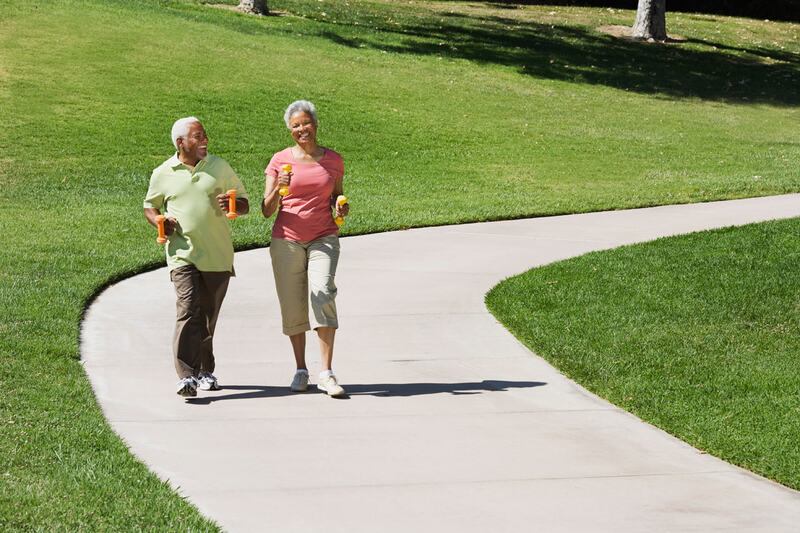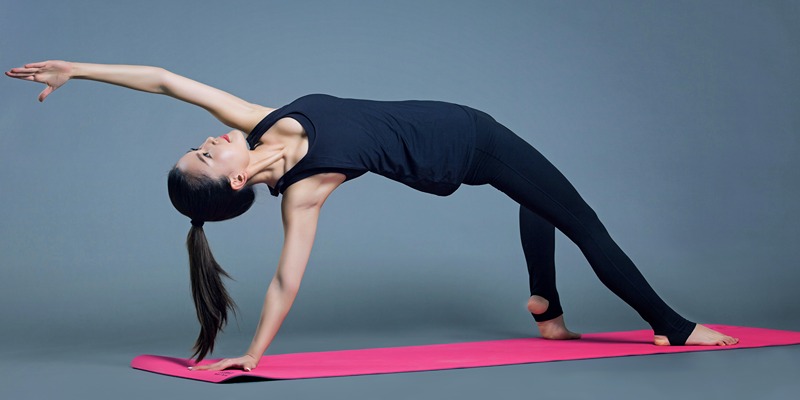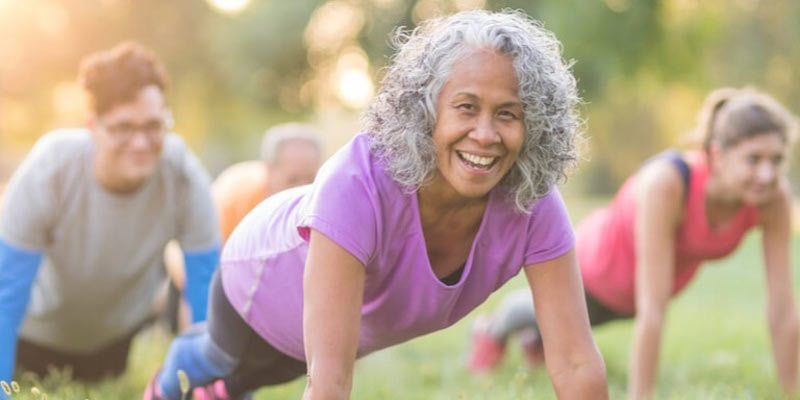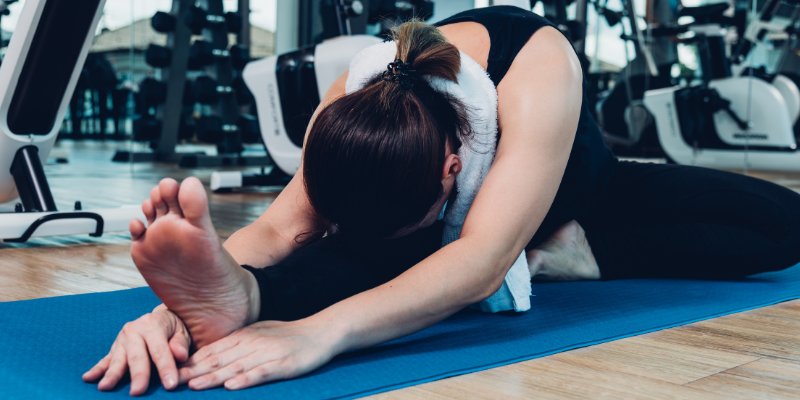Exercise for Older Adults - Navigating Chronic Conditions
Dec 18, 2023 By Madison Evans
Regardless of age, a healthy lifestyle fundamentally incorporates physical activity. Older adults managing chronic conditions must prioritize exercise even more. This article explores guidelines for senior fitness and underscores the need for tailored approaches specifically designed for those grappling with chronic diseases. We will walk you through the significance of sustaining an active lifestyle, along with specific recommendations for aging individuals who encounter diverse health challenges.
Understanding the Significance of Senior Fitness Guidelines
Individuals aging experience benefits of regular physical activity that extend beyond their physical well-being. Exercise enhances mental health, improves cardiovascular health, and manages chronic conditions significantly. Therefore, it is crucial to implement proper senior fitness guidelines to ensure a balanced and sustainable approach to exercise in the elderly population.
Tailored Exercise Plans for Chronic Disease Management
Addressing Specific Health Concerns
Distinct approaches to exercise are necessary for different chronic conditions. Tailoring physical activity plans to address specific health concerns is fundamental. Seniors with heart-related issues, for example, may prioritize cardiovascular exercises.
However, low-impact activities could benefit those suffering from arthritis. Crafting effective exercise regimens hinges on a paramount understanding of individual health needs.
Incorporating Strength Training
Senior fitness guidelines often emphasize older adults' need for strength training. Enhancing muscles enhances overall mobility and also assists in the management of chronic conditions such as osteoporosis.
Supervised if necessary, carefully structured resistance training can significantly enhance an individual's functional capacity.
Exercises Suitable for Older Adults with Chronic Conditions
Older adults managing chronic conditions must actively engage in physical activity, but this necessitates a thoughtful and customized approach. We will now explore specific exercises appropriate for seniors with diverse health challenges.
1. Low-Impact Cardiovascular Exercises:
Maintaining heart health and overall well-being necessitates essential cardiovascular exercises. Older adults with chronic conditions must opt for low-impact activities. This choice is crucial in minimizing joint stress and decreasing injury risk.
- Walking: One can easily tailor this simple yet effective exercise to individual fitness levels.

- Stationary Cycling: This provides a low-impact approach to enhance cardiovascular fitness.
- Swimming: An exceptional full-body workout; renowned for its joint-friendly nature--offers a multitude of benefits.
2. Chair Exercises:
Chair exercises: a safe and accessible option, particularly for individuals with limited mobility or balance issues. These exercises offer stability. They also mitigate the risk of falls as they can be performed while sitting, thus presenting an ideal solution.
- Seated Leg Lifts: This exercise regimen enhances the muscles in your lower body, all while circumventing any undue strain on your joints.
- Seated Marching: This activity enhances circulation while actively involving the core muscles.
- Seated Torso Twists: The program enhances upper body flexibility.
3. Strength Training with Resistance Bands:
Maintaining muscle mass and bone density, especially for older adults with chronic conditions, necessitates crucial strength training. Incorporating strength exercises into a routine in a controlled and adaptable manner is possible through the use of resistance bands.
- Leg Press: Targeting the muscles of the lower body, it mimics the motion of a squat.
- Chest Press: This exercise regimen enhances the strength of both chest and arm muscles.
- Seated Row: Focuses on the muscles of the upper back.
4. Balance and Stability Exercises:
Falls are a significant concern for older adults. To prevent that, one must prioritize enhancing balance. This is an imperative. Enhancing stability through exercise not only aids in overall well-being. It also significantly contributes to the improvement of health.
- One-Leg Stand: Engage in this uncomplicated exercise to enhance your balance and fortify the muscles in your legs.
- Heel-to-Toe Walk: Challenging coordination and balance promotes stability.
- Balance Exercises with Bosu Ball: Traditional exercises become unstable with the addition of an element.
5. Flexibility and Stretching:
For the preservation of joint mobility and prevention of stiffness, one must prioritize maintaining flexibility. Gentle stretching exercises enhance this flexibility, thus diminishing injury risks.
- Neck Stretches: It alleviates tension and enhances flexibility in the neck.

- Shoulder Rolls: The exercise enhances mobility in the upper back and shoulders.
- Hamstring Stretch: Promotes flexibility in the back of the thighs.
6. Mind-Body Exercises:
Tai chi and yoga, these mind-body exercises not only strengthen physical health but also underpin mental well-being. These practices emphasize controlled movements, deliberate, focused breathing, and above all mindfulness.
- Tai Chi: A slow, flowing martial art that improves balance and reduces stress.
- Yoga for Seniors: Gentle yoga poses adapted to accommodate various physical abilities.
- Pilates: Strengthens the core and improves overall flexibility.
Implementing Lifestyle Changes for Long-Term Well-Being
- Nutrition and Hydration
Proper nutrition and hydration, in conjunction with exercise, pivotally enhance the well-being of older adults suffering from chronic conditions. By tailoring dietary habits to their specific health needs, they can amplify the effects of physical activity, thus promoting overall health and vitality.
- Regular Health Check-ups
Monitoring the effectiveness of exercise regimens and aligning them with older adults' evolving health needs necessitates regular health check-ups. A comprehensive approach to managing chronic conditions through physical activity can be provided by collaborating healthcare professionals and fitness experts.
Adapting to Individual Preferences and Limitations
- Personalized Approach
Senior fitness guidelines do not adhere to a one-size-fits-all approach. It is crucial to recognize individual preferences and limitations to create sustainable exercise plans. Whether that be through an emphasis on outdoor activities or customizing workouts because of physical restrictions, this personalization guarantees adherence, thus promoting long-term success.
- Incorporating Social Elements
Engaging in exercise need not remain a solitary pursuit. Indeed, the incorporation of social elements, such as participating in group classes or working out with friends. These can enhance one's experience, making it both more enjoyable and motivating.
Moreover, through these social interactions’ seniors can bolster their mental well-being, a crucial layer of support for those managing chronic conditions.
Conclusion
To conclude, one must embrace a holistic approach when adhering to exercise guidelines for older adults with chronic conditions. This strategy factors in individual health needs, preferences, and limitations.
Through the customization of exercise plans, focusing on specific health concerns while incorporating lifestyle changes, older adults pave their way toward achieving and sustaining optimal well-being. It's crucial to remember that each individual's journey toward improved health is unique. Therefore, success hinges on a thoughtful and personalized approach.
On this page
Understanding the Significance of Senior Fitness Guidelines Tailored Exercise Plans for Chronic Disease Management Addressing Specific Health Concerns Incorporating Strength Training Exercises Suitable for Older Adults with Chronic Conditions 1. Low-Impact Cardiovascular Exercises: 2. Chair Exercises: 3. Strength Training with Resistance Bands: 4. Balance and Stability Exercises: 5. Flexibility and Stretching: 6. Mind-Body Exercises: Implementing Lifestyle Changes for Long-Term Well-Being Adapting to Individual Preferences and Limitations Conclusion
Measurements That Matter: Understanding Waist Circumference for Health

Yoga Fusion: Enhance Your Practice with Exercise Ball Poses

Kombucha: 5 Powerful Health Benefits of This Probiotic-Rich Beverage

Should You Really Cut Your Cuticles? A Comprehensive Guide

A Possible Reasons For Always Feeling Tired And Their Impacts

Bananas and Weight Loss: Unraveling the Truth Behind the Myth

Atrial Fibrillation: Common Causes, Symptoms, Treatment, And More

Unveiling the Secrets to Weight Loss and Heart Health

Cinnamon and Weight Loss: Exploring Myth and Reality

How Can You Treat Hypertrophic Scars Effectively?

Exercise for Older Adults - Navigating Chronic Conditions
